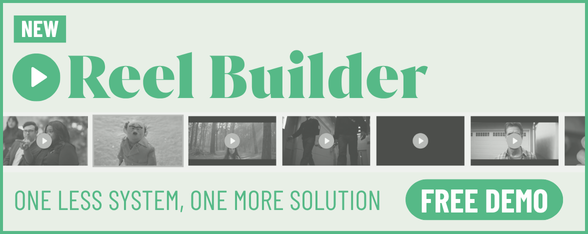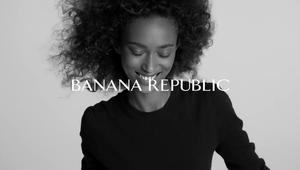
Finely Sliced: Understanding the Mechanics of a Story with Aidan Kane

Aidan hails from South Texas on the border but his early career in modelling and acting led him to The Big Apple. After several years in front of the camera, he realised that he preferred to tell the stories. After writing, directing and editing his own feature ‘Eleanor’ he committed himself to editing full time.
Aidan’s mastery of music and sound design create strong edits with lots of confidence. His command of technical specifications mean there’s almost no problem he can not solve.
LBB> The first cut is the deepest: how do you like to start an editing project?
Aidan> The first and most important cut happens on paper. Scripting is vital. I also find it very useful to research similar spots so that I may fine tune my own creative ideas. After that, I familiarise myself with the media – ALL OF IT. Once I get into the thick of the edit, my process is always a balance of technique and creative. Pacing and emotion are the biggies. They are what I really love to hone in on during the early stages of the edit. I've learned that if I have both of those aspects built into my initial blueprint, then the rest of the edit is smooth sailing. I guess the simple answer is: I like to discover my influences and experiment with my creative execution all the while having a sharp focus on pace and emotion.
LBB> Non-editors often think of editing just in technical terms but it’s integral to the emotion and mood of a film. How did you develop that side of your craft?
Aidan> My development never stops. I always have a desire to research films, commercials, docs, music videos, even social media content in order to broaden my knowledge and fine tune my craft. There is so much great content available to research, both past and present. Emotions can be subjective which makes evoking them from the viewer very tricky. It's something that needs to be studied, constantly. I ask myself, “How have the great editors of the past done it?” “How are today's top editors doing it?” Research is a big part of my process when it comes to emotion and mood.
LBB> How important is an understanding of story and the mechanics of story?
Aidan> Understanding the 'mechanics of story' is crucial, especially considering storytelling evolves over time. This is definitely a subject that deserves constant research. A basic framework has a beginning, middle and end; however, the journey in between those can be woven in MANY different ways depending on the rising action and plot. The films 'Pulp Fiction' and 'Memento' are great studies in the evolution of story mechanics. When I'm working on a cut, I constantly think about action and how it can be used to engage the viewer on a unique emotional level whether my edit is an hour, 60 seconds or even 10 seconds. The goal is the same: tell a great story.
LBB> Rhythm and a sense of musicality seem to be intrinsic to good editing (even when it’s a film without actual music) – how do you think about the rhythm side of editing, how do you feel out the beats of a scene or a spot? And do you like to cut to music?
Aidan> That's a great question. There have to be numerous books written about the 'rhythm of editing.' Rhythm is by far the MOST IMPORTANT part of storytelling. Without it, all emotion would fall flat. Every scene has a heartbeat, and I like to mark the beats of a scene based on a character’s actions. This helps me lay out their tactics toward achieving their objectives. Once that blueprint is established, I experiment with sub-beats based on a character's intentions all while looking for hints of foreshadowing in the performance. Once all that is laid out, all information that needs to be provided to the viewer will be clear. Then I am ready for music. I love editing to music, especially when the 'music' of a scene is only sound design. That is when I'm at my most creative.
LBB> Tell us about a recent editing project that involved some interesting creative challenges.
Aidan> Honestly, ‘Problem Solver’ should be an alternative job title for an editor. On a recent project, the initial creative and the footage were great; however, the client decided they wanted to push it further by combining talent performances and product together on screen. Unfortunately, this was never captured and production couldn’t add another shoot day so we were in a SERIOUS pickle. This situation was a perfect example of where you need to forge ahead and where an editor’s technical skills can help elevate the creative. I found myself keying, compositing, and animating to fake everything that I could to achieve our final spot. In the end, it came together nicely and the client loved it.
LBB> In the US we know that editors are much more heavily involved across the post production process than in Europe - what’s your favourite part of that side of the job?
Aidan> I've never worked for a European agency so I can't really speak to the 'difference' but here in the States my editorial experience and creative opinion are valued. I think it's crucial to have a close relationship with the creatives on any project. As my career progressed, so did my relationships with clients. With that came more freedom and expectation. I get hired not only to bring my client's creative idea to life but to make it sing loud and stand out in the mass noise of content out there. They may have a strong vision so it's important for me to bring it alive in the edit. But I also love being encouraged to take ownership which makes me deeply invested in the edit. I enjoy collaborating with others. It keeps the creative process from getting dull.
LBB> What’s harder to cut around – too much material or not enough? (And why?)
Aidan> Not enough is much harder. I'll always prefer more over less without a doubt. I can always find help screening footage and pulling SLX. I can't make new footage for the client.
LBB> Which commercial projects are you proudest of and why?
Aidan> The 2022 and 2023 Toyota branded spots I’ve cut for the MTV VMAs. There were so many people involved in making those pieces and in such a short turn around. Collaborating with a large team can be challenging on a normal timeline let alone on an accelerated one. However, when everyone is on their A-game, the creative just flows. In the cases of those two projects, we had major obstacles that we needed to overcome and the teams crushed it. I'm very proud of that work. The final products made the sleepless nights worthwhile.
LBB> There are so many different platforms for film content now, and even in advertising something can last anywhere from a few seconds to a couple of hours. As an editor, are you seeing a change in the kind of projects you’re getting from brands and agencies?
Aidan> Yes. It's been happening for a while. Clients are giving more attention and thought on how to use micro-content. Movie trailers now have mini-trailers before they start. Any two minute spot I edit will need a 60 second cutdown and a few 10-15 second teasers. People watch a lot of content these days and you gotta have the tools to hook them or get lost in the void.
LBB> Who are your editing heroes and why? What films or spots epitomize good editing for you?
Aidan> There are so many. This list could easily hit 100 so I'll just stick with some of my favourite film editors and films. Chris Dickens and 'Slumdog Millionaire,' Dody Dorn and 'Memento,' Roderick Jaynes and 'The Big Lebowski,' Paul Machliss and 'The World's End,' Sally Menke and 'Pulp Fiction,' Nancy Ricardson and 'Thirteen.' These are all superb films and the editing in each is a masterclass in storytelling.
LBB> How does editing in the commercial world differ from the film world and TV world?
Aidan> I mostly work in the commercial market. I assume the major differences are the accelerated timelines of commercial editing and the many, MANY different deliverables that come with working on commercial and branded content nowadays.
LBB> Have you noticed any trends or changes in commercial editing over recent years?
Aidan> AI. It's here and it's getting better and faster exponentially. In my practice, I use it mostly for technical assistance (keying, masking, vocal noise reduction) but its applications are growing. Any application that may speed up workflow is worth learning.















